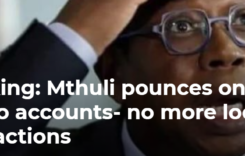Aerial view of Marange diamond fields. Source: Google Earth
By Nelson Banya
DURING his 92nd birthday interview with the Zimbabwe Broadcasting Corporation (ZBC) aired on March 5 2016, former president, Robert Mugabe, made the following claim:
“We have not received much from the diamond industry at all,” he said.
“Not much by way of earnings. I don’t think we have exceeded $2 billion or so and yet we think that well over 15 or more billion dollars have been earned in that area.
“So where have our carats been going?The gems? You see, there has been quite a lot of secrecy in handling them and we have been blinded ourselves. That means our people who we expected to be our eyes and ears have not been able to see or hear what was going on and lots of swindling, smuggling has taken place and the companies that have been mining have virtually, I want to say, robbed us of our wealth.That is why we have decided that this area should be a monopoly area and only the State should be able to do the mining in that area.
Given the lingering suspicion that revenues from the Marange diamond fields had been looted by connected politicians, Mugabe’s claim was readily accepted and even assumed the level of a major confession.
But does the claim stand up to scrutiny?
Marange, a history
Geologists working for global diamond mining giant, De Beers, are credited with discovering the Marange alluvial diamond deposits around 2000.
Thereafter, De Beers, through its prospecting company, Kimberlitic Searches, acquired two Exclusive Prospecting Orders (EPO) for Marange in the early 2000s.
By the time the EPO expired in 2006, De Beers had taken a decision not to exploit the deposits.
In June 2006, the Marange exploration rights were taken up by African Consolidated Resources.
The company unsuccessfully sought to exploit the Marange deposits in a joint venture with the state-owned Zimbabwe Mining Development Corporation (ZMDC). Instead, the ZMDC laid claim to the entire claims initially granted to ACR.
A court battle ensued, which resulted in ACR’s rights being upheld.
Meanwhile, in August 2006, a diamond rush into Marange took place, attracting an estimated 10 000 illegal artisanal miners into the vast fields.
 Source: Associated Press
Source: Associated Press
The illegal mining persisted until November 2008, when the government deployed security forces to drive panners out of the fields, in a crackdown dubbed ‘Operation Hakudzokwi’ (don’t come back).
Government faced international criticism for alleged human rights abuses committed by the security forces during the crackdown.
Global pressure was brought to bear and Zimbabwe was not allowed to trade in diamonds from Marange until the industry watchdog Kimberley Process Certification Scheme (KPCS) had verified that the country was compliant with its standards meant to eliminate trade in conflict gems.
A KPCS monitors certified Zimbabwe compliant in June 2010, paving the way for international auctions.
Production statistics
The global rough diamond market has average $12,63 billion in size, between 2009 and 2015. Production has averaged 126 million carats annually over that period.
The Kimberley Process, an intergovernmental diamond certification scheme, was launched in 2003 to prevent diamonds from fuelling civil wars and conflict. The Kimberley Process only covers the trade in rough diamonds (diamonds before they are cut or polished). The vast majority of diamond trading and producing countries – the European Community and 46 countries in total – are members of the Kimberley Process and are required to implement an import/export control regime to keep out conflict diamonds: diamonds used to finance conflict and civil wars.
Critics of the Kimberley Process have, over the years, pointed to some loopholes in this system, which have led to violations. However, these violations are estimated to be in the order of millions, not billions, and, while they are a matter to be dealt with, they could hardly put a dent in the global rough diamond industry, which reached $14 billion in 2016, according to the latest available Kimberley Process data.
Mugabe’s 2016 reference was to the period between 2009, when government took effective control of Marange, to 2015, the full year preceding his statements.
During that period, Zimbabwe’s cumulative gross rough diamond sales amounted to $2,432,041,507.87, according to the Kimberley Process Certification Scheme’s rough diamond production and sales statistics. Production, over that period, was nearly 50 million carats. https://kimberleyprocessstatistics.org/public_statistics
Industry data
Apart from the Kimberley Process Certification Scheme, other industry players such as Russia’s Alrosa, the world’s largest rough diamond producer accounting for a third of global production, routinely release data showing output and market trends.

Source: Alrosa

Source: Alrosa

Source: Alrosa
Low quality diamonds?
Between 2009 and 2015, Zimbabwe’s diamonds fetched an average of $46,09 per carat. Diamond industry officials and experts attribute the low prices, relative to the global average, to the low grade as well as trade restrictions that come with Zimbabwe’s troubled ties to Western states, which have maintained economic sanctions on its government since 2000.
The United States maintains an embargo on diamonds from Marange, while the European Union only lifted its ban in 2013, four years into formal diamond mining in the region.
Marange’s diamond are generally small, with a brownish-green, somewhat tarnished tint. A large percentage of Marange’s production goes into industrial use.
However, the stones have a lower cost of production per carat, in the $20-$45 range, significantly lower than the global average of $100 per carat, according to industry expert Paul Zimnisky.
http://www.paulzimnisky.com/marange-may-not-be-the-worlds-largest-diamond-producer-for-much-longer

This is largely due to the fact that the Marange diamonds are alluvial and are easily extractable, compared to deposits which require large-scale commercial open-pit or underground mining.
By 2013, mining companies operating in Marange were already indicating that the near-surface deposits in their concessions were exhausted and the firms were considering the economy of mining deeper-lying conglomerate rocks.
Victims of their own claims
Between 2010, when Zimbabwe’s diamond production surged 775 percent to 8,4 million carats, and 2012, when it reached its peak output of 12,1 million carats, former mines minister, Obert Mpofu, repeatedly claimed the country would become the world’s top diamond producer. Mpofu projected 40 million carat output annually, which would earn Zimbabwe an average $2 billion, at the $50 carat price.
However, output has been trending downward since 2012, for a variety of reasons, including diminishing alluvial deposits.
To sustain the $15 billion revenue claim by Mugabe, Zimbabwe would have produced at least 40 million carats annually, between 2009 and 2015, the year preceding his claim.
This level of production would not have escaped the global diamond industry, which is always on the look-out for supply dynamics, given the impact of a supply glut on prices.
Industry figures do not show any impact in global rough diamond production since Zimbabwe entered the industry in 2009.

Conclusion: INCORRECT
Zimbabwe did not produce diamonds worth $15 billion.
There is no evidence to back up Mugabe’s claim, which has since been taken up and repeated by media, politicians and civic society groups, that Zimbabwe earned “15 or more billion dollars” from Marange diamond sales.
The global rough diamond market averaged $12,63 billion between 2009 and 2015, with production averaging 126 million carats. During that time, Zimbabwe produced a cumulative 50 million carats, earning just over $2,4 billion for the seven years under review, according to data provided by industry watchdog, Kimberley Process Certification Scheme as well as other industry players.
Critics of the Kimberley Process Certification Scheme have, over the years, pointed out loopholes in the watchdog’s systems, but their indications are that any leaks from the process amount to trades worth millions of dollars, not billions.
To reach the level of earnings claimed by Mugabe, of $15 billion or more, Zimbabwe would have produced an average 40 million carats annually, output which could not go unnoticed in the industry, given its impact on global supply.
Zimbabwe’s level of production implied in the claim would have seen the country supplanting Russia, currently the world’s largest producer, whose output averaged37 million carats in the period under review.
About the author: Nelson Banya is a researcher with ZimFact.
Do you want to use our content? Click Here











